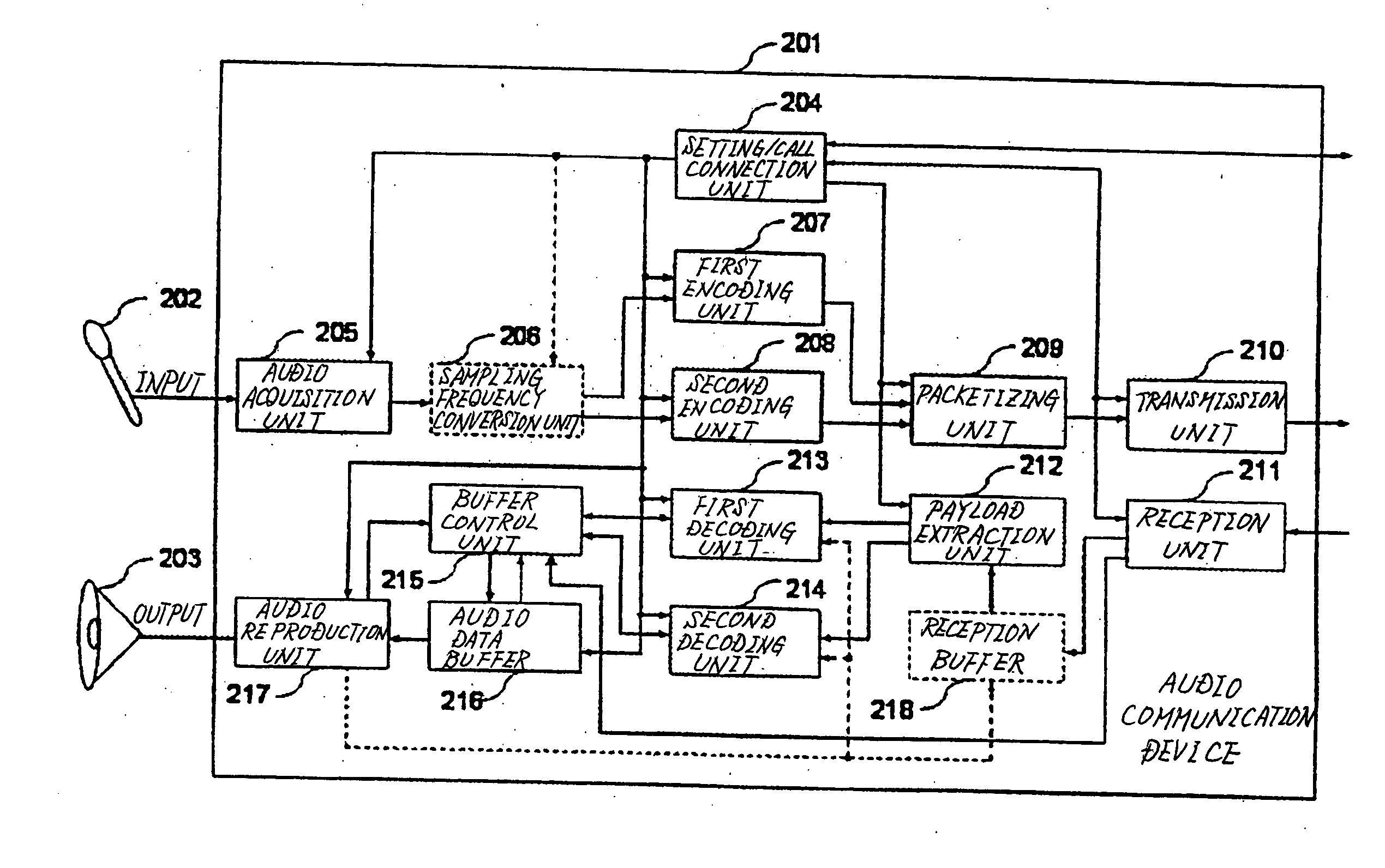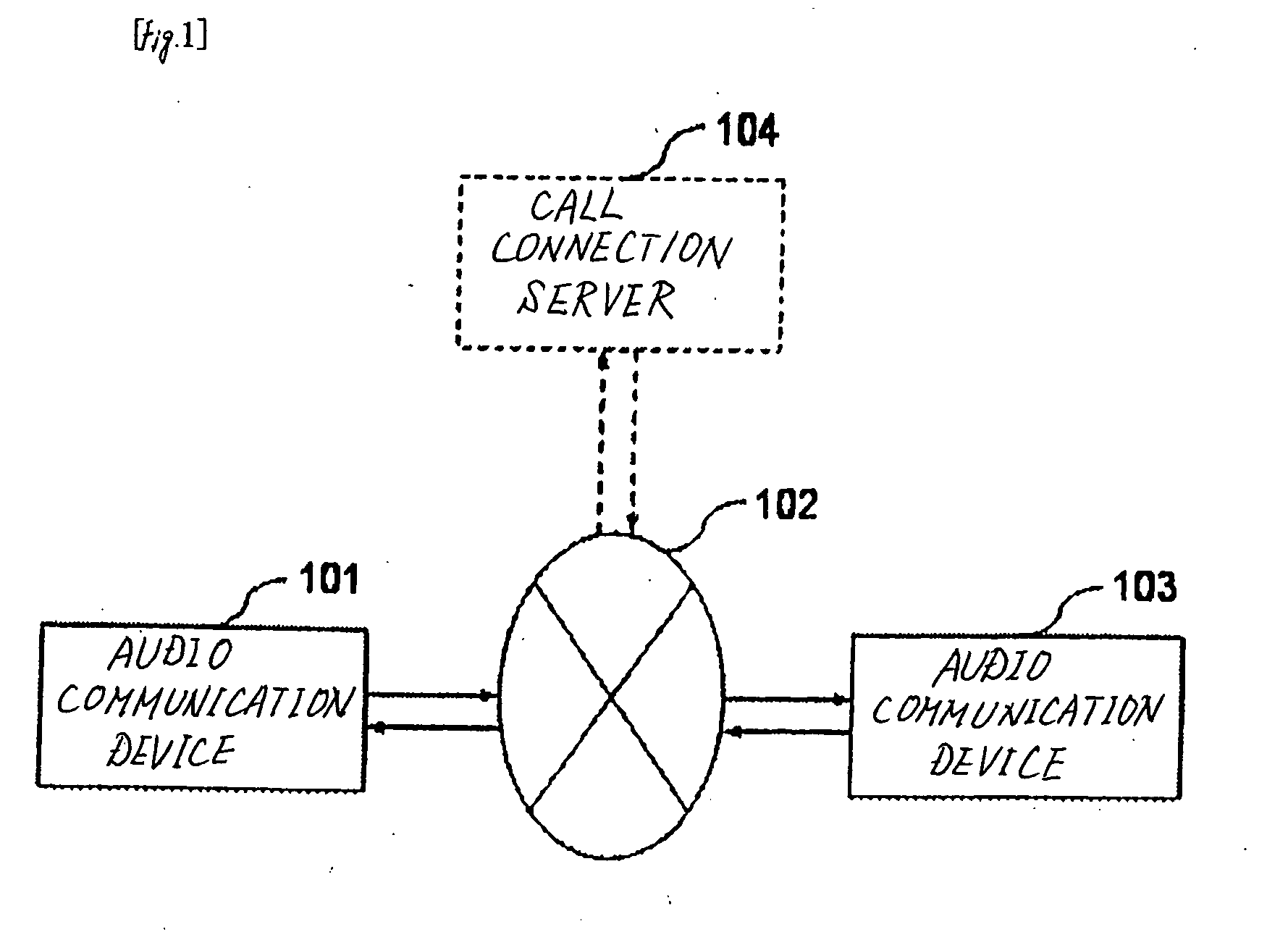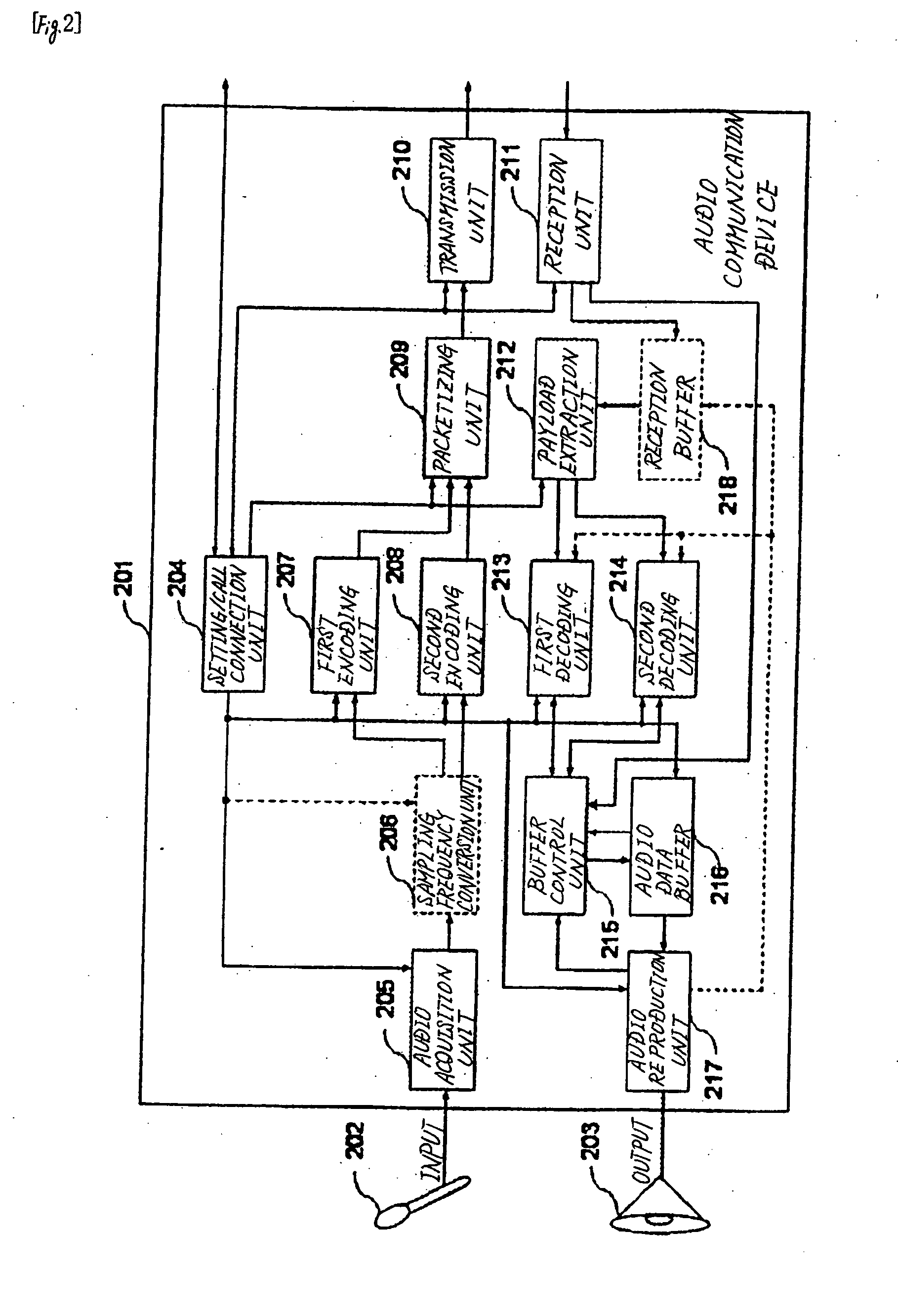Audio Communication Method And Device
a communication method and audio technology, applied in the field of audio communication methods and devices, can solve the problems of insufficient jitter, longer delay in audio communication, and shorter delay, and achieve the effect of suppressing audio quality degradation and increasing delay
- Summary
- Abstract
- Description
- Claims
- Application Information
AI Technical Summary
Benefits of technology
Problems solved by technology
Method used
Image
Examples
first embodiment
[0022]FIG. 1 is a block diagram showing a configuration example of an audio communication system, and FIG. 2 is a block diagram showing a configuration example of the audio communication device according to the present invention. Also, FIG. 3 is a timing chart showing timing of the encoding process by the first encoding unit and the second encoding unit shown in FIG. 2, and FIG. 4 is a block diagram showing a configuration of the buffer control unit according to the first embodiment arranged in the audio communication device of the present invention. Incidentally, audio communication device 201 shown in FIG. 2 is a common configuration example that is available to audio communication device 101 and audio communication device 103.
[0023] As shown in FIG. 1, the audio communication system is configured by connecting audio communication device 101 and 103 that mutually transmit and receive audio data through network 102, which is an IP (Internet Protocol) network. Audio communication d...
second embodiment
[0085] Next, explanations are given of the audio communication device of the second embodiment according to the present invention with reference to drawings.
[0086]FIG. 5 is a block diagram showing a configuration of a buffer control unit according to the second embodiment in the audio communication device of the present invention.
[0087] The audio communication device of the second embodiment is different from the first embodiment in the configuration of buffer control unit 215. The other configurations and operations are similar to those of the first embodiment, and therefore detailed explanations thereof are omitted.
[0088] As shown in FIG. 5, the buffer control unit of the second embodiment has data selection determination unit 501 instead of parameter determination unit 402 and sampling frequency conversion unit 403 shown in the first embodiment. Buffer amount monitor unit 401 and padding data insertion unit 404 are similar to those of the first embodiment, and therefore explan...
PUM
 Login to View More
Login to View More Abstract
Description
Claims
Application Information
 Login to View More
Login to View More - R&D
- Intellectual Property
- Life Sciences
- Materials
- Tech Scout
- Unparalleled Data Quality
- Higher Quality Content
- 60% Fewer Hallucinations
Browse by: Latest US Patents, China's latest patents, Technical Efficacy Thesaurus, Application Domain, Technology Topic, Popular Technical Reports.
© 2025 PatSnap. All rights reserved.Legal|Privacy policy|Modern Slavery Act Transparency Statement|Sitemap|About US| Contact US: help@patsnap.com



